#zoe zenghelis
Photo

Zoe and Elia Zenghelis, Hotel Therma, Lesbos, 1985.
1 note
·
View note
Text
With Eagle + West, OMA New York adds a bold pair of textured, stepped towers to the Brooklyn waterfront
With Eagle + West, OMA New York adds a bold pair of textured, stepped towers to the Brooklyn waterfront
New York City looms large in the OMA mythos, but the firm hasn’t had much success in building tall here. A first attempt came in the mid-1970s, when original cofounders Rem Koolhaas, Elia Zenghelis, and Zoe Zenghelis imagined a dense concentration of stepped and interlinked towers for Roosevelt Island (then Welfare Island). OMA’s local office, founded in 2001, has proposed its fair share of…

View On WordPress
0 notes
Text

Rem Koolhaas, Elia Zenghelis, Zoe Zenghelis, Madelon Vriesendorp - Boompjes Tower Slab, Rotterdam, The Netherlands, 1981
7 notes
·
View notes
Text

Rem Koolhaas, Elia Zenghelis, Madelon Vriesendorp, Zoe Zenghelis - Exodus, or the Voluntary Prisoners of Architecture. The Central Area - 1972
#art#architecture#illustration#hiddenarchitecture#archilovers#technique#archdaily#urbanism#illustrations#1970s#oma#eliazenghelis#exodus#utopia#critics#zoezenghelis#madelonvriesendorp
112 notes
·
View notes
Photo
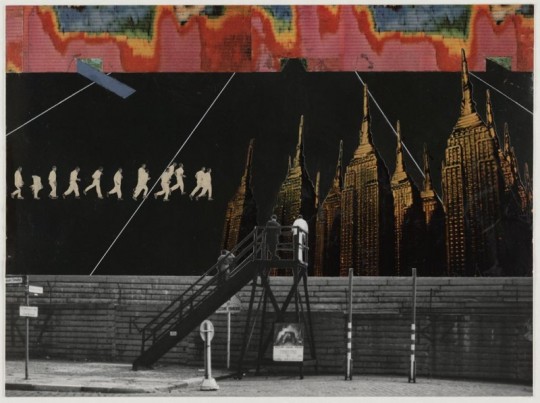

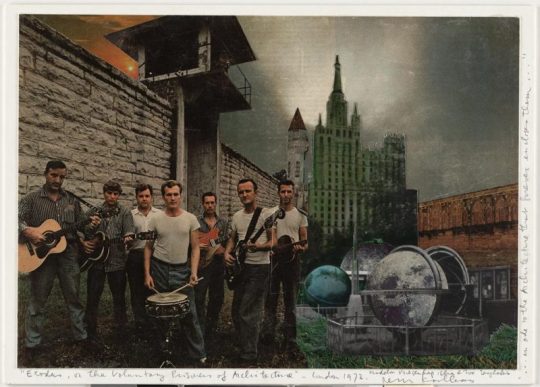
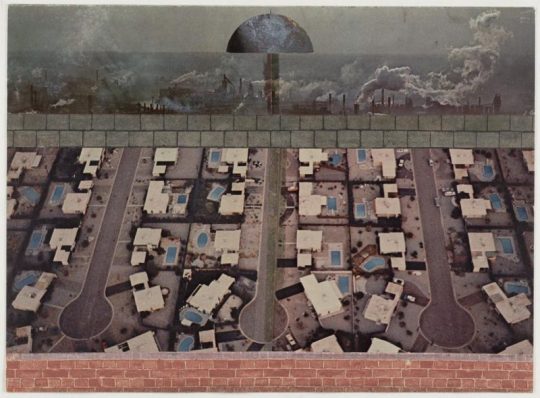



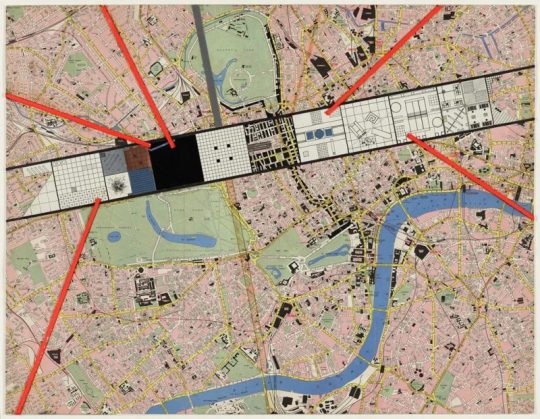


Exodus, or the voluntary prisoners of architecture
Rem Koolhaas, Madelon Vreisendorp, Elia Zenghelis, and Zoe Zenghelis (1972)
Once, a city was divided in two parts. One part became the Good Half, the other part the Bad Half.
The inhabitants of the Bad Half began to flock to the good part of the divided city, rapidly swelling into an urban exodus.
If this situation had been allowed to continue forever, the population of the Good Half would have doubled, while the Bad Half would have turned into a ghost town.
After all attempts to interrupt this undesirable migration had failed, the authorities of the bad part made desperate and savage use of architecture: they built a wall around the good part of the city, making it completely inaccessible to their subjects.
58 notes
·
View notes
Photo
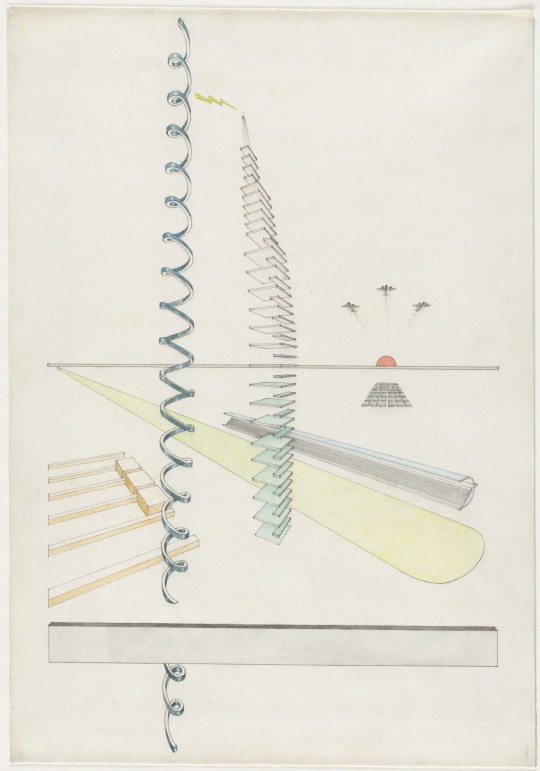
Rem Koolhaas, Elia Zenghelis, Madelon Vriesendorp, Zoe Zenghelis
Exodus, or the Voluntary Prisoners of Architecture: The Park of Aggression 1972
Graphite and watercolor on paper
MoMA
34 notes
·
View notes
Photo





Rem Koolhaas with Madelon Vreisendorp, Elia Zenghelis, and Zoe Zenghelis / Exodus, or the voluntary prisoners of architecture Thesis, AA, London, 1972; all works © Rem Koolhaas.
#berlin wall#architecture#art#artist#artwork#rem koolhaas#oma#architectural drawing#architectural association#london#prison#charles baudelaire#theclassyissue#archdaily#architectural language#dystopia#dystopic#urban#urban scenary
64 notes
·
View notes
Text
Rolf Schock Prize in Visual Arts 2022: Rem Koolhaas
Rolf Schock Prize in Visual Arts 2022 Winner, Rem Koolhaas Prize News, OMA Architects
Rolf Schock Prize in Visual Arts 2022 Winner: Architect Rem Koolhaas
28 March 2022
Dutch architect Rem Koolhaas of OMA, Rotterdam, NL:
photo Courtesy of OMA / Photography by Fred Ernst
The Rolf Schock Prize in Visual Arts 2022 is awarded to Rem Koolhaas
This year’s Rolf Schock Laureates are the architect Rem Koolhaas, pianist Víkingur Ólafsson, philosopher David Kaplan, and the mathematician Jonathan Pila. The Rolf Schock Prizes are awarded every other year and span areas as varied as science, the visual arts and music. The four laureates will share 2 million Swedish kronor.
Rolf Schock was a vibrant person who, throughout his life, was interested in logic and philosophy, as well as the visual arts and music. On his death, he bequeathed his money to a foundation which, since then, has awarded the Rolf Schock Prizes. The laureates are selected by three Swedish academies: the Royal Swedish Academy of Fine Arts, the Royal Swedish Academy of Music and the Royal Swedish Academy of Sciences,
The Schock Prizes are unusual because they recognise people who work in the sciences, as well as practitioners of the visual arts and music. People such as Rolf Schock are fascinating, individuals who have the breadth and ability to see the interrelationships between such apparently different areas. We are very proud of this year’s laureates, who have been proposed by the three different academies.
Hans Ellegren, Secretary General of the Royal Swedish Academy of Sciences
and chair of the Schock Foundation.
Visual arts
The 2022 Rolf Schock Prize in Visual Arts is awarded to Rem Koolhaas, a Dutch Architect
for his long commitment and unique breadth as a theoretician and polemicist on the subject of the relationship of architecture and urbanism to, and their possibilities in, a global political context. The prize is specifically awarded for Koolhaas’ ability to combine a theoretical and architectural practice in which each designed building, of a high and individual quality, expresses an overarching idea in terms of urban development, culture and politics.
Rem Koolhaas, who was born in 1944, is a Dutch architect, theoretician, polemicist and provocateur. Since the early 1970s, he has occupied a central position in architecture and urban planning, and seemingly tirelessly produced works and writing that provide social commentary. He began his career as a journalist and script writer, which has influenced his architecture in which each project, each building, is an expression of a larger urbanistic cultural and political context.
Rem Koolhaas’ most significant works include KunstHal Rotterdam, 1993, the widely appreciated Seattle Public Library from 2004, and his often criticised CCTV headquarters in Beijing, completed in 2012. In 1975, Koolhaas co-founded the Office for Metropolitan Architecture (OMA) with Madelon Vriesendorp, Elia Zenghelis and Zoe Zenghelis.
Read more about the Rolf Schock Prize in Visual Arts
Musical arts
The 2022 Rolf Schock Prize in Musical Arts is awarded to the Icelandic pianist Víkingur Ólafsson
for his pioneering and successful work in developing and strengthening classical music. Ólafsson is one of the most creative and innovative musicians of our time. With each piece of music, he creates a new world, conveying both depth and brilliance, leaving a unique impression on the listener.
Icelandic pianist, Víkingur Ólafsson, was born on February 14, 1984. He studied at the Juilliard School in New York under Jerome Lowenthal and Robert MacDonald and also took lessons with Ann Schein.
Ólafsson has been awarded many prestigious prizes for his recordings, including BBC Music Magazine’s Recording of the Year, and has collaborated with composers such as Philip Glass and Daníel Bjarnason. He has performed with leading orchestras, including the Los Angeles Philharmonics and Swedish Radio Symphony Orchestra and appeared as Artist in Residence at Konzerthaus Berlin among others.
As a host in television and radio, as well as his creative collaborations with artists in other genres, such as Björk, Ólafsson has made an impact with his music that goes beyond the ordinary, successfully bringing classical music to wider audiences.
Logic and philosophy
The 2022 Rolf Schock Prize in Logic and Philosophy 2022 is awarded to David Kaplan, University of California, Los Angeles, USA
for his contributions to the understanding of the role played by the extra-linguistic context for the semantics of natural language, for the logic of natural language sentences, and for the nature of belief.
David Kaplan is the Hans Reichenbach Professor of Scientific Philosophy at the University of California, Los Angeles, USA. Kaplan has made ground-breaking contributions to the understanding of the semantics of indexical expressions and their role in natural language. They include pronouns such as “I” and “him”, demonstratives such as “that girl”, and temporal adverbs like “yesterday”. The meaning of such expressions partly depends on the context in which they are used. To describe their role, Kaplan extended a framework of modern logic that is called possible-worlds semantics.
Its standard versions have two semantic levels, but Kaplan showed that indexicals require a third, intermediate level. The contents of speakers´ thoughts belong at this level. He also showed that this level has its own logic, which he chose to call the Logic of Demonstratives, and he developed the model theory – the formal semantic theory – for this logic.
Mathematics
The 2022 Rolf Schock Prize in Mathematics is awarded to Jonathan S. Pila, University of Oxford, UK,
for his groundbreaking work on André-Oort’s conjecture.
Jonathan Pila is an Australian mathematician at the University of Oxford. He completed his Bachelor’s degree in Melbourne and then his PhD at Stanford in 1988. He then held positions at Columbia, McGill, Bristol and (as a visiting scholar) at the Institute for Advanced Study in Princeton before taking an extended break from the world of mathematics to work in his family’s business.
He is mainly active in Diophantine geometry, which is a branch of number theory that studies Diophantine equations using algebraic geometry. Pila has decisively enriched this field by introducing methods based on model theory in mathematical logic. Using these methods, together with Zannier, he provided a completely new proof of the Manin-Mumford conjecture. He has subsequently, partly in collaboration with Tsimerman, made important contributions to the even more demanding André-Oort conjecture.
Jonathan Pila has received several prestigious awards, such as the Clay Research award and the Senior Whitehead Prize from the London Mathematical Society.
About the prize
On his death in 1986, Rolf Schock left a significant fortune and, in his will, he donated a large sum of money to allow a prize to be awarded in his name. His wish was that the Royal Swedish Academy of Sciences to propose laureates in logics and philosophy, as well as in mathematics, that the Royal Academy of Fine Arts would propose laureates in one of the visual arts and the Royal Swedish Academy of Music in one of the musical arts. His fortune is managed by the Schock Foundation, which formally decides the laureates.
This year’s prize ceremony will be held 24 October 2022 in the auditorium of the Royal Academy of Fine Arts in Stockholm.
Read more about Rolf Schock and the prize
Om Konstakademien
The Royal Swedish Academy of Fine Arts is a versatile institution tasked with working to ensure that art and architecture are afforded the significance and support needed to endure and enrich a vibrant society.
Rolf Schock Prize in Visual Arts 2022: Rem Koolhaasimages / information received 280322
Design Awards
The SBID Awards 2020 Winners
images courtesy of SBID
SBID International Design Awards 2020
RIBA House of the Year 2021 Winner
photo : Paul Riddle
RIBA House of the Year 2021 Winner
RIBA President’s Medals 2021: Student Awards
Wolfson Economics Prize 2021: Ab Rogers
Brick Awards 2021 – winning Buildings + Architects
Comments for the Rolf Schock Prize in Visual Arts 2022: Rem Koolhaas page welcome
The post Rolf Schock Prize in Visual Arts 2022: Rem Koolhaas appeared first on e-architect.
0 notes
Text
Visual Resources - Artstor

Pips - 1983 Nov 16, Print / Flier. (Johan Kugelberg punk collection - Division of Rare and Manuscript Collections, Cornell University Library.)

“Exodus, or the voluntary prisoners of architecture exhausted fugitives led to reception, project.” - Architectural Drawings. - Drawing date: 1972, Project Date: 1972. Cut and pasted gelatinous silver photographs and photolithography with ink, crayon and marker on paper. Currently exhibited at MOMA.
Main artists: Rem Koolhas, Madelon Vriesendorp, Elia Zenghelis and Zoe Zenghelis.

Anti-pop print / poster. 1979 - UK (Johan Kugelberg punk collection) Currently held at Division of Rare and Manuscript Collections, Cornell University Library.

Photography of an Estate Flat in London - Mishka Henner and Liz Lock. - 1980.
“ The ground floor window of an occupied flat shows signs of neglect on the Kingsland Estate in Hackney, London. Boarded-up and half-empty housing estates have become familiar landmarks in deprived areas of London as property developers rush to replace these with new luxury loft apartments and live-work spaces. Despite these changes, the Kingsland Estate has experienced a steady decline due to lack of maintenance and a gradual emptying of the estate since the early 1980s.”
Packaging Design from Britain - 1940.
“Contains assorted packaging and graphic design from the early twentieth century including Bisto tin and Lifebuoy soap label from Britain, Paindor beer label, Anjou wine label, Camembert cheese label, Montagut poster for stationary store and Jean Girand fi”

One of the images that I picked which stood out to me is the Packaging labels in Britain, even though this is one of the older visual resources I like looking back at the history of design in the UK Given the political and economic standpoint at the time, and means I can look at more present designs / know more about it, if I know the origins.
0 notes
Photo





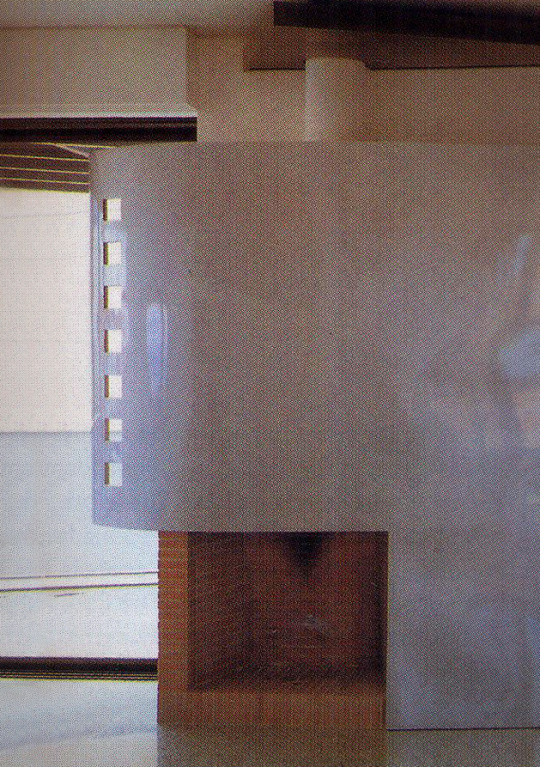



475. Elia Zenghelis & Eleni Gigantes /// Villa Chalkiades /// Mytilene, Lesbos Island, Greece /// 1989
OfHouses presents “Solo Albums”:
”Elia Zenghelis was a founding partner of OMA, along Rem Koolhaas, Madelon Vriesendorp and Zoe Zenghelis. Zenghelis’ role was incremental to OMA’s first decade, from “Exodus” (1972) to the competition for the “Parc de la Villette” (1982). His “Villa Chalkiades“ (1989) retains the cadavre-exquis collage quality of the “Dutch Parliament Extension” (1978) or the “Irish Prime Minister Residence” (1979); still, Rem’s absence is felt oh so clearly.”
(Photos: © Laure Thorel. Source: Francisco Asensio Cerver, “Houses of the World”, (Cologne: Konemann, 2000), pp. 384-87.)
#solo#Elia Zenghelis#Eleni Gigantes#oma#Chalkiades#Mytilene#Greece#80s#OfHouses#oldforgottenhouses#the collection of houses#www.ofhouses.com
236 notes
·
View notes
Photo

oma, zoe zenghelis - the city of the captive globe, 1976
5 notes
·
View notes
Photo

Madelon Vriesendorp - Flagrant délit, 1975 - Delirious New York
The Dutch artist, painter and illustrator Madelon Vriesendorp is known for her historic contribution to the Office for Metropolitan Architecture (OMA). Born in 1945 in the Netherlands, Vriesendorp studied at the Rietveld Academy in Amsterdam in 1964 and worked as a restorer of historic frescoes, and a designer of theatrical costumes, books and jewellery. In 1969, she enrolled at St. Martin’s School of Art in London and exhibited her work, among other places, at the Workshop and the Serpentine Gallery. In 1972 she settled in Ithaca and then in New York City with Rem Koolhaas, whom she married. It was there that she founded the OMA Agency, together with Koolhaas, and Elia and Zoe Zenghelis. The paintings she produced at that time were used for covers of magazines and books, and in particular for the famous work Delirious New York (Rem Koolhaas, 1978). Those works presented a graphic synthesis of OMA’s theoretical concepts and contributed to their international distribution; they would be exhibited all over the world (at the Guggenheim in New York, the Centre Pompidou in Paris, the Stedelijk Museum in Amsterdam, the Aedes Galerie in Berlin, the MA Gallery in Tokyo…). In 1976, Vriesendorp returned to London and took part in many competition projects for OMA; with Teri Wehn-Damisch, she made an animated film for French television. Since the mid-1980s, she has been teaching art and design in different schools, including the Architectural Association in London and the Edinburgh Art School. Over the past 10 years, she has collaborated as draughtswoman on many books by Charles Jencks, and illustrated magazines such as Built, Domus and Abitare. In 2008, the Architectural Association put on her first solo show, and she took part in the Venice Biennale in 2009. In that same year, the Swiss Architectural Museum in Basel showed some of her works, and she was also awarded an honorable fellowship at the RIBA.
VIA: frac
#art#technique#Architecture#archdaily#archilovers#architectureporn#hiddenarchitecture#Illustration#Madelon Vriesendorp#oma#DELIRIOUS NEW YORK#nyc#USA#1970s#books#allthebooks
101 notes
·
View notes
Photo








Exodus, or the voluntary prisoners of architecture
Rem Koolhaas, Madelon Vreisendorp, Elia Zenghelis, and Zoe Zenghelis (1972)
Once, a city was divided in two parts. One part became the Good Half, the other part the Bad Half.
The inhabitants of the Bad Half began to flock to the good part of the divided city, rapidly swelling into an urban exodus.
If this situation had been allowed to continue forever, the population of the Good Half would have doubled, while the Bad Half would have turned into a ghost town.
After all attempts to interrupt this undesirable migration had failed, the authorities of the bad part made desperate and savage use of architecture: they built a wall around the good part of the city, making it completely inaccessible to their subjects.
7 notes
·
View notes


